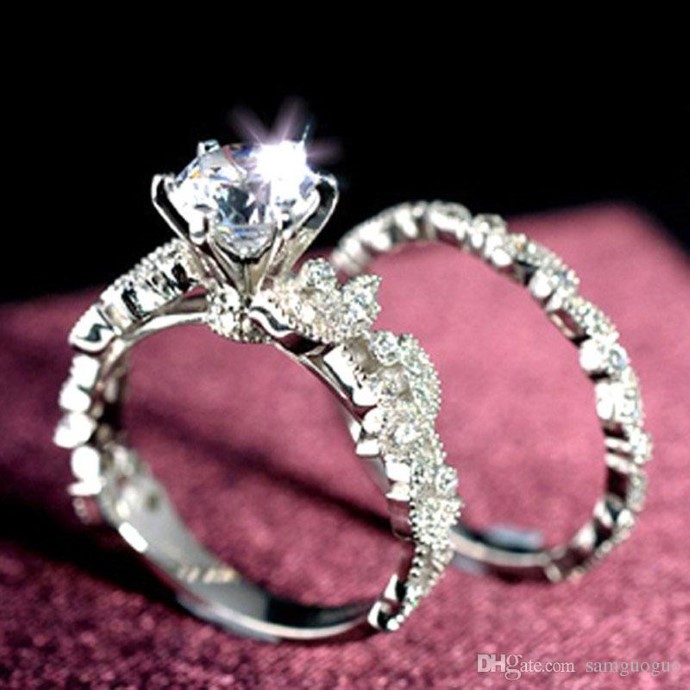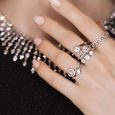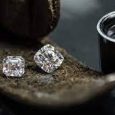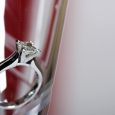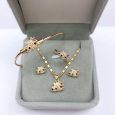
Buying diamonds today may seem a bit more complicated to shoppers now because there are so many more choices. And it choice has its own benefits and drawbacks. So, you have to be wise and do some investigations before laying down your hard-earned cash. Fortunately, the internet allows consumers to research extensively prior to buying so they know what they are getting, and in their case, understand that the choice they made is right for them.
There are so many diamond types, especially when it comes to the niche of enhanced diamonds. Two of the kinds of diamond enhancement are called laser drilling and fracture filling. Let’s discuss both kinds, which are completely separate from one another. But, in fact these two types of diamond enhancements may be used together to produce the final product, which is a gorgeous diamond that anyone would want.
Before you select your diamond, it’s vital to recognize what clarity actually means with regards to a diamond’s value. And then understand how this vital trait can be manipulated to improve the beauty of the stone. Today, there are quite a few techniques applied to diamonds which are used to enhance their clarity so that it appears more attractive to the eye. These practices certainly do impact the value of the particular diamond; especially to those that are determined to be not permanent modifications.
On the market –whether that be on the internet, or in actual retailer jewelry stores there is a category of diamonds, also referred to as “clarity enhanced” diamonds. We stated previously, while there are many ways for improving a diamond’s clarity, just one form of this enhancement process has actually become known as fracture filling. In this discussion, we’ll look at both forms—laser drilling and fracture filling so as to familiarize you with what you will want to know about each of them and then we’ll answer the pressing most questions on the subject.
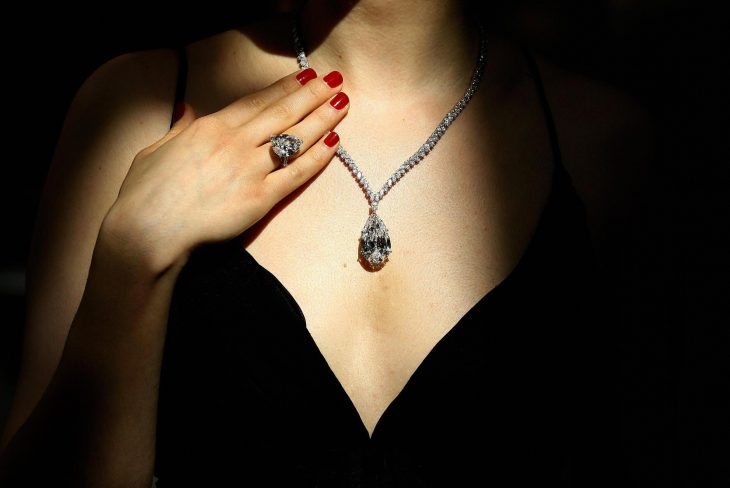
An Overview of Clarity Enhancement
The trade term clarity enhanced diamonds simply refer to diamonds that, more than often than not, are diamonds that exhibit (naked) eye-visible natural imperfections. This means they are often stones that graded as I1, I2 or I3 in clarity. And, since no one usually will settle for a diamond with eye-visible inclusions, the jeweler or dealer stuck with that stone will send it to the lab to have those inclusions treated so that they become invisible to the naked eye. The use of the term naked eye simply means that examined diamond or gemstone does not appear to show any imperfections when one views it normally without any aids. Jewelers or even consumers may use a jewelers 10X loupe or a microscope to look deeper into the stone and observe imperfections once the crystal has been magnified.
In such cases where the inclusions (natural imperfections sometimes called blemishes) are apparent, fracture (inclusion) filling is the answer. This technology is ideal to visibly ‘remove’ the inclusions and render the stone nearly flawless. Who wouldn’t want a diamond like that? Of course, if you bought a nearly flawless diamond, it’s price is beyond reach to most consumers. The fracture filling treatment is similar to the concept of this; if you’ve ever cracked your car windshield, instead of replacing the windshield with a whole new one, the repairman simply fills in the crack with a clear glass-like liquid material that hardens to look exactly like the glass. The crack is actually still there but now the windshield is actually stronger with the bonded material and there is no evidence of the former crack. In the same way, clarity enhanced diamonds which are known as “fracture filled” in the trade can undergo a similar repair. A photomicrograph of a diamond needing fracture filling will clearly show that it has a rather large eye visible imperfection. After the filling procedure, this naturally occurring inclusion having its treatment on the inclusion completed has become invisible to the human eye.
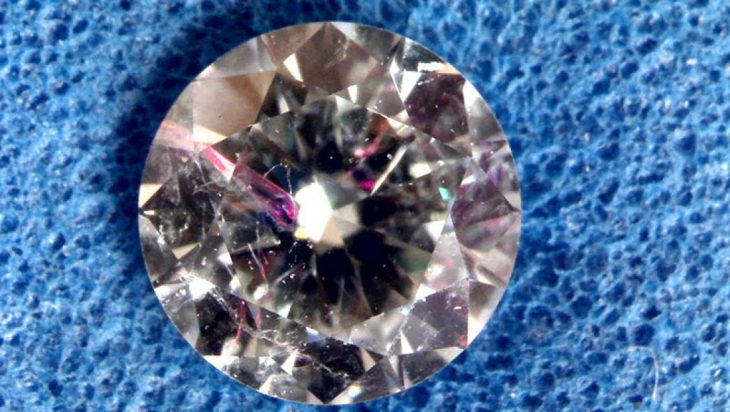
While there are a lot of techniques applied to diamonds needing improvement, this relatively new process has been designed to enhance the beauty of a faceted crystal by filling its cleavages and fractures that actually reach the surface of the diamond with a high-RI material—close to that of a diamond, helping to successfully disguise these inclusions. It is also one of the most often discussed diamond and gemstone treatments to appear in the last decade. Because it is so successful, shoppers need to buy their enhanced diamonds only from reputable dealers who disclose these treatments to their consumers. In turn, the buyer should expect the price on the clarity enhanced diamond to be much more attractive than if they bought a high clarity un-treated stone. That’s why reputable dealers say you can get a larger brighter stone for your money by buying a clarity enhanced diamond. It’s true, you can do just that. To put this into perspective, this treatment can potentially upgrade the perceived clarity of the treated stone from an SI to all the way to a VS. That’s a huge improvement. An I quality diamond can be made much more coveted and beautiful by this enhancement process.
The Fascinating History of Fracture Filling Diamonds
The story behind the invention of fracture filling diamonds is quite fascinating. You have to go back to the last quarter of the 20th century to find its origin. The first commercially accessible diamond fracture-filling method was developed in Ramat Gan, Israel by Zvi Yehuda, in the mid-80s. This discussion will mention the three well known producers of fracture-filled diamond goods. These companies are Koss & Shechter Diamonds (Genesis II), Yehuda/Diascience, and Clarity Enhanced Diamond House (a subsidiary of Goldman Oved Diamond Company). There are other fine laboratories doing this highly technical procedure, but these firms are more well known in the trade. More and more of these enhanced diamonds are now entering the marketplace. The challenge of identifying every fracture-filled diamond and working with them at the jeweler’s bench is now a normal reality to be dealt with. Besides the loose stones sold in parcels which were initially made available, now mounted diamond goods which are fracture filled are also readily obtained. This complicates the process of identification even further because certain mounts and settings can help to disguise any signs of treatment. But you shouldn’t worry when doing business with a reputable diamond merchant. Not only do they clearly disclose the treatments in the diamonds they offer, but they advertise that fact. They are very proud to offer these diamond products knowing that the smart shopper will get a gorgeous diamond but also at a great value.
GIA Began examining Fracture Filled Diamonds
Back in January of 1987, GIA (Gemological Institute of America) first examined a fracture-filled treated diamonds. At the time, its filling material was thought to possibly be either a type of glass or a specialized silicone-oil compound. But, whatever it was, it originally could not withstand all many jewelry manufacturing or repair procedures that could occur with a diamond over its expected lifetime. So, the system was greatly improved to what is today—making fracture filled diamonds a more durable product for consumers.
Boiling Diamonds for Beauty
The later development of diamond boiling—or boiling diamonds in a special formula added another layer of beauty to the end result. Boiling a stone in sulfuric acid in a special diamond boiling kit may be a later advancement which is beneficial to diamonds being treated for beauty and salability. The boiling process which is an interesting method—utilizes sulfuric acid to reach into hard to access crevices of the diamond and remove the foreign material leaving the diamond clean and clear—a real asset to its clarity grade.
The whole topic of gemstone enhancement is not a new idea—although we feel it’s a very technologically advanced treatment for modern diamonds and gemstones. It certainly makes them more salable and attractive to buyers. Not only is the beauty greater, but the prices at which they are sold are very appealing to consumers. For example, the concept of oiling emeralds—those ancient and most coveted stones, was a practice that dates back to the ancient Roman Empire, was a much-utilized gemstone treatment where air-filled fractures in gemstones like emeralds were filled with a transparent oil or some other suitable material rendering them less more attractive with seemingly less apparent blemishes. Modern diamond fracture filling works on much the same principle by replacing the air or vacant space. Normally then, these fracture filling materials fill in such breaks with a completely transparent substance that has a refractive index very close to that of diamond. According to GIA’s examination, the refractive index or RI, of the filling compound is seen to be lower than the RI of a diamond which is 2.417 for diamonds. Still it is as close as you can get-it is extremely close to that of a diamond, so the filling disappears and all you can see it the clear diamond. This intended result is a much less visible imperfection and one that improves the overall appearance of that stone to the unaided eye.
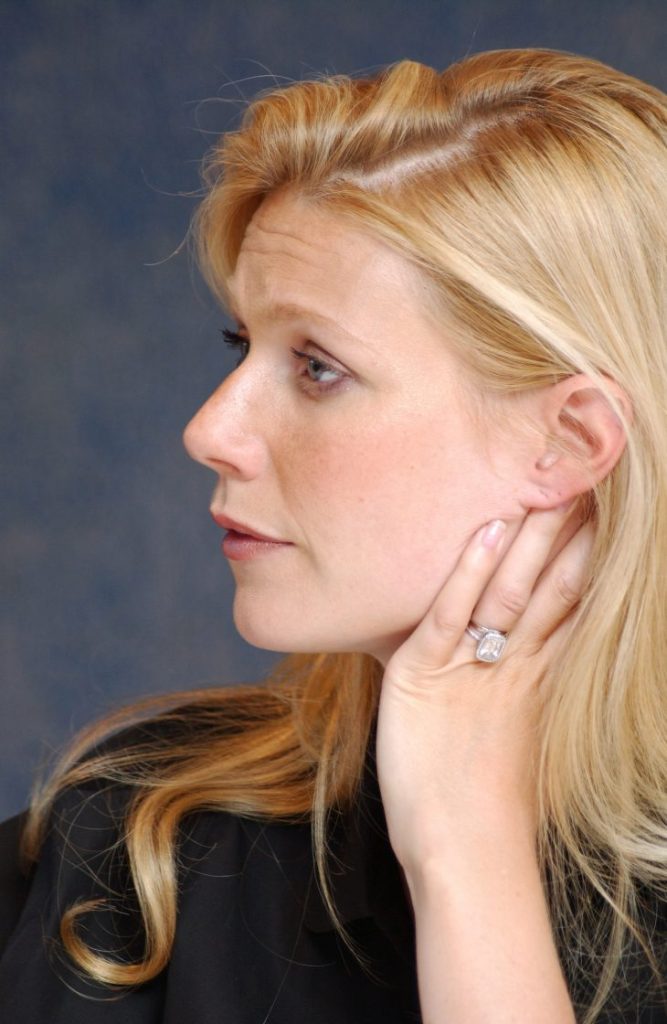
Proprietary Treatment for Cleaning
The special process treated diamonds marketed by major diamond producers throughout the trade are first cleaned by some proper method. The superior filling compounds developed by leading diamond manufacturers is then injected into the diamonds under conditions of relatively high pressures (ranging in the area of 50 atmospheres) and at a projected temperature of 400⁰ Celsius. Of course, the exact procedure remains a tight secret with the labs, and most likely involves the use of a vacuum component which will prevent diamond burning. Afterward, the filled diamond is then cooled down and cleaned again to remove the filling mixture from the stones’ surface making the entire event seamless. The precise composition of each lab’s filling material remains a very closed secret but at least it is now known to be a type of molten glass. Even less is known of about some other laboratories that have perfected the fracture filling process. Because they are relatively newer procedures there is still very little published information is available in the trade yet. However, the approximate temperature of treatment for some of the other labs doing this process is estimated to be at 600⁰ Celsius and between 500 to 550⁰ C
The clarity improvement expected for all the major diamond treatment processes can be dramatic in stones with either small or large inclusions. Bearded girdles—which is an undesirable and rough exterior on a diamond’s circumference can also be effectively treated. Occasionally there is no apparent improvement in the clarity after treatment if it has not been carefully assessed as to treatment beforehand. However, the treatment usually has an effect on the overall color grade of the stone. In certain cases, a change of one full color grade may result.
With the unaided or naked eye, a fracture filled diamond crystal may appear to have a very slightly different overtone. In the case of stones which have undergone many separately treated areas, the modification to overtone is most apparent. Examination of the fractures and cleavages under the use of a microscope is the most effective way of positively recognizing any enhancement done to the crystal.
HOW TO TELL IF YOUR STONE IS FRACTURE FILLED?
Even the novice can learn ways to detect fracture filling in a diamond by patient observation. Of course, the diamond professional is your best source for discovering this procedure in your diamond and pointing out where you can see it. Basically, the presence of one or more of these tell-tale features in a diamond provides evidence that the stone has had some procedure done to it.
THE FLASH EFFECT—This is one of the most easily recognizable and obvious characteristics of a fracture filled treated stone. Fracture filled breaks may display a prominent yellowish orange interference color observed under darkfield illumination that alters to an intense vivid almost electric looking blue when the stone is toggled ever so slightly to a position where the background turns a bright hue through a secondary reflection. When the treated stone is tilted back and forth, its color will change from orange to blue and then back to orange again in a flashing manner—called the Flash Effect. This flash effect was originally believed to be due to some light interference mechanism. But today, it’s now thought that the flash colors are due to light dispersion instead.
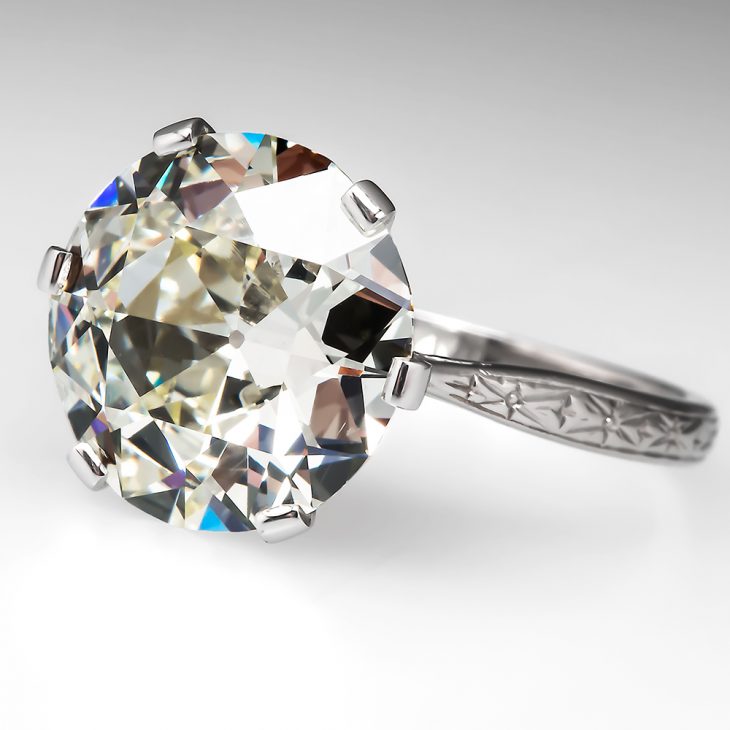
How to View Your Diamond
In order to successfully observe this response, the viewing angle must be very steep, nearly parallel to the plane of the treated fracture or its cleavage. A flash effect can even be seen at low magnification with proper illumination behind the observer. For instance, stones with cleavage or fractures in the table-to-culet direction will certainly display that tell-tale flash effect quite easily through its table facet. Dark brownish-yellow to orange diamonds will only display that distinguishing vivid electric blue flash effect due to their particular body color. In some treated diamonds on the other hand, the flash effect is not really visible in the case of extremely small separations, like those seen in a bearded girdle. Occasionally even a large filled fracture, oddly enough, it will not display that signature flash effect. It goes to show just how tremendous the treatment really is in making offending inclusions seem to disappear. Today’s shopper however should have no fear of this fact. Because the reputable dealer is the first one to tell you about the work that has been done on the stone. Recently, in diamonds treated by a leading manufacturer’s process, a flash effect was observed along the laser drill holes as well. The flash colors in some treated stones can be less vivid than those seen in another manufacturers treated stones.
Diamonds in Mounting
To be able to observe the process in diamonds already set in mountings, you might need to modify your methods of observation somewhat. In these scenarios, the additional use of intense fiber-optic illumination, especially on these mounted stones, may be a necessary next step. The intense light emanating from a pinpoint (fiber-optic) illuminator could help make the flash effect significantly more noticeable as well as revealing the extent of the fracture filled breaks and any hairline fractures inside the filling compound itself. In the case of mounted stones, where viewing angles are often somewhat restricted, the flash effect may be seen as reflections in the facets around the stone. Then again, in darkfield illumination, one or more of the following colors shall be visible to the viewer depending on the manufacturer of course; yellow, orange, pink, (orange and pink being the most common) and blue, purple and red. In bright field illumination then, blue-green, green and greenish-yellow are commonly observed. The red flash effect has only been visible in certain treated stones.
Here’s something you probably didn’t know but will be helpful to understand. In the case of untreated diamonds which have cracks and slim fractures that are surface reaching– they may display a rusty orange tinted stain on the surface. This is not the flash effect you read about with fracture filled diamonds but rather this is naturally occurring iron compounds that give off a rust colored stain. It should never be mistaken for that true orange flash effect seen on fracture filled stones.
Here’s another helpful bit to know. Untreated fractures seen in some diamonds often behave as thin films overlaid on the area and can also display bright iridescent colors when viewed in certain directions. Toggle the stone in question back and forth to see if you pick up any impression of iridescence on the stone you are examining. The rainbow-like hues with the feathery appearance of the cleavage itself is an indicator that the gemstone you have has not been clarity enhanced. Therefore, the rainbow-like interference tint which can obviously vary in intensity, should always produce the same color sequence with a broad range of hues. True Flash effects as the result of fracture filling always display a single color at most viewing angles or at the very most, just two colors at a time. The optimum viewing angle for observing a legitimate flash effect is near parallel to the actual break.
Recognizing Fracture Filled Diamonds
Because there are several laboratories successfully creating laser enhancement to diamonds and fracture filling of the diamonds, you will see different traits that indicate a stone has been treated. But depending on the particular lab doing the treatment, you may not observe all of these indicators. Here are a few that you might possibly observe;
A FLOW STRUCTURE EFFECT; An ofttimes distinguishing trait of some diamond enhancement methods is something called a flow structure to the filling compound itself. This specialized compound is forced under conditions of high pressure into these exposed cavities at an enormously high-temperature when the compound is in a molten state. At this point, the filling material flows by something similar to a capillary action into any open crevices in the stone.
This will mask the normal feathery looking appearance common to diamond fractures. And under 10X magnification, these flow structures appear glassy and present a recognizable melted look. This feature can be very subtle or even absent from some treated stones. It can be very understated or even fairly prominent in other lab’s fracture-filled treated diamonds. Utilizing fiber-optic lighting is known to be helpful with its detection.
BUBBLES; Trapped within the filling compound, gas bubbles may sometimes become visible under astute microscopic observation. Occasionally, these microscopic bubbles while usually quite small may under certain circumstances be observed as quite large and therefore obvious. For instance, in some areas where the material is concentrated, the bubbles are so plentiful that they form what is called in the trade a fingerprint-like inclusion within the stones. In all likelihood its formation it is most often the result of shrinkage of the compound inside that during its cooling and perhaps even from air that became trapped in the breaks by the melted filling material. Of course, gas bubbles are visible in many different labs who manufacture fracture filled treated diamonds.

CRACKLY TEXTURE; A less common characteristic of some laboratories fracture filled enhancement process is a crackled or what is referred to as a web-like texture appearing in a surface reaching break. Similar in appearance to the mud cracks one finds in dried out lake beds, this may only be visible in the very thickest portion of any filled areas. This characteristic texture could either be the result of a partial crystallization of the filling compound or it could occur from the rapid shrinkage happening as it cools. One thing is for sure, the appearance of this distinctive texture is conclusive evidence that the diamond in question has been fracture filled. The crackled texturing hasn’t been detected in all fracture filled stones. In some treated diamonds, the filled breaks are extremely fine. This characteristic can be nearly parallel with whitish lines that appear to be miniscule fractures within the filler. This distinct feature is understated to be sure. And it can only be seen with the aid of fiber-optic illumination. The crackly texture has not been observed in every fracture filled diamond.
INCOMPLETE SURFACE COMPOUND; Professionals will often look for stones frequently showing very shallow areas of incomplete filling which can be seen at the stones’ surface. Under microscopic darkfield illumination, these treated areas appear to have fine white scratches. This and the other traits are not usually visible to the naked eye of course.
CLOUDY SURFACE ON FILLED AREA; Some fracture filled stones sometimes have a sort of cloudy, circular looking surface markings. It’s apparently a residue effect from the treatment process itself. Recent stone samples sent to labs for observations have been shown to exhibit a filling residue around the entry access to some filled fractures. But, none of these surface-reaching features were noticeable on all brands of fracture filled and treated diamonds. Recently several examined treated diamonds also displayed areas of diminished transparency or areas of white clouds, in a few of the fracture filled breaks. Less common though, were several cloudy areas also visible in fracture filled treated diamonds. In certain fracture filled stones, this characteristic feature would be visible even before recognizing that flash effect.
It is important to understand while these are diagnostic traits, that not all of these designated features will actually be found in every stone examined. Furthermore, no single gemological feature or even suite of features will conclusively identify which particular lab treated a specific diamond.
FILLING COLOR; The specific tint of a fracture filling compound has also been scrutinized. For instance, in some company’s filling, the mixture itself appears to be very light brown to orangey yellow in color. In such cases, the apparent color of the compound will serve to explain the often lowering of the color grade after treatment has been done to the stone. Other treated diamond,
Use of Laser Drilling to Remove Inclusions
Newer procedures are being developed all the time, often building on earlier achievements in this field. Nowadays, the fracture filling procedure can be applauded for its subtle appearance with stellar results. That’s good news for consumers who want laser drilled or fracture filled diamonds for their beauty and affordability. But they don’t want their stones to show the effects of this technology.
Today, laser drilling technology turns out products with increasingly fewer traits and even those are almost invisible. Nowadays, the tiniest laser beam is used to drill into the crystal, which results in tunneling-in to remove any natural blemishes. A single ultra-thin beam of high energy light is harnessed to bore the smallest tunnel possible from the surface of the stone straight into its intended area. A specially formulated a very strong acid is then forced down the tunnel under great pressure and high heat to bleach out or even burn away the intended inclusion. Laser drilling of this type in diamonds typically leaves micro-lines resembling tiny jet trails, which are only visible under side-view magnification. You’ll note a miniscule white dot when observing these trails from the top view (table facet side) of the diamond.
Another newer type of laser drilling diamond enhancement creates cracks around these inclusions near to a diamond’s surface. When the natural imperfection is finally removed, the marks left behind are said to look more like natural flaws than the laser trails that they are.
Diamond laser drilling removes these inclusions permanently and does not alter the integrity of the stone. Through normal cleaning and care, or the heat generated on the jeweler’s bench during future setting or repairs won’t alter the appearance of the stone.

Laser Drilling Diamonds and Fracture Filling
The two-part process of laser drilling diamonds and fracture filling can also go hand in hand. So, some diamonds have had both treatments done to them. Laser drilled areas that are filled-in with the transparent substance are more difficult to detect. And that’s exactly the intent of the process. It’s not meant to deceive because reputable dealers always disclose the process. Under certain conditions, the filler itself may not be considered as permanent.
When first introduced years ago, the process of laser drilling diamonds was not adequately disclosed to consumers. All that has changed today, thankfully. This is evident with the current professional guidelines for diamond description. For example, previously the Federal Trade Commission (FTC) guidelines for the gemstone and diamond trade did not require disclosure of the practice. This blatant lack of candor by diamond manufacturers and wholesalers drew an outcry from both jewelry retailers and consumers. Today, as a direct result of these insistences, all trustworthy jewelry administrations mandate full disclosure of all diamond laser drilling. The FTC is furthermore considering a revision of its guidelines. You will always want to protect your investments and interests by only buying diamonds from the responsible affiliations like EGL, AGS, or GIA grading laboratories. Avoiding diamonds which do not have accompanying documentation that specifically describes what if any treatments have been applied to the stone.
Fracture Filling Fills Cracks
All diamonds have minute fractures and fissures. When the fissures are large and numerous they can detract from a diamonds beauty and value. In lower grade diamonds these fissures can give the diamond a cloudy, whitish appearance and may be visible to the naked eye.
In the late 1980s a new process was developed to hide the fissures. Known as “fracture filling” the process involves filling the fissures with a glass-like substance that is formulated to mimic the color and optical properties of the diamond being treated. As a result, the fissures in a fractured-filled diamond become less visible as in the before (left) and after (right) photo.
The cracks don’t disappear, but the film creates an optical illusion that makes them invisible to the naked eye. Fracture filling is not a permanent treatment. Heat from repairs, cleaning, and sunlight can erode the filler or darken its color.
Some signs of fracture filling can be seen using a 10X jeweler’s loupe, but others require a microscope. With magnification, you might see flashes of color where cracks have been filled. The flashes aren’t like the typical brilliant colors you see when rotating a stone. Instead, they follow the lines and shapes of the filled cracks. Trapped air bubbles are another sign of fracture filling, either singly or in groups that create a cloudy appearance.
Unfilled cracks may produce color flashes, too. The Gemological Institute of America (GIA) offers helpful advice that unfilled breaks are easiest to detect when looking at them from a perpendicular angle, while filled breaks are more obvious when looking at them from a parallel perspective.
Protect yourself by buying a diamond with a certification from the AGS, GIA or HRD. These grading laboratories test diamonds for fracture filling and do not provide certifications for diamonds that have been clarity enhanced with fracture filling. It is our understanding that the EGL will list clarity enhancement in the comment section of their diamond grading reports.
Is Fracture Filling a Good Option for Engagement Rings?
We buy diamonds for all different reasons. First time diamond purchasers are usually looking for the perfect diamond for their engagement ring. That’s where it becomes critical to look for all the different kinds of diamonds available. That way, when you’ve selected the right one for you, you’ll never second guess yourself again. You’ll know that you’ve looked over all the options, and if you so select a fracture filled diamond, or a laser drilled diamond, or both, you will have found the perfect stone for you at the right price for your budget. Your diamond engagement ring, whether it is un-treated, or fracture filled, or laser drilled is meant to last a lifetime and be enjoyed every single day of your life. After all, your diamond is a symbol of the very special love between the two of you and you want it to reflect your special life together. So if you’re shopping for a diamond engagement ring or other diamond jewelry that will be worn every day, then keep in mind that a fracture filled stone will need a bit more care; but you want to give all your fine jewelry special handling to preserve their beauty for a lifetime; even more. Some diamonds are meant to be passed down in the family. Could that be yours too?
Enhanced is Particular Term
Be aware if someone implies that the word enhanced is a vague concept. Perhaps they think it does sound more desirable than the word treated, but when you buy diamonds, you want specifics don’t you? Any diamond, whether it’s an engagement ring or a milestone piece of jewelry, is an important investment, both emotionally and financially. So, the best to do when you select a specific stone is to first of all, find out which treatments were used. Then determine exactly how those specific treatments affect the value of your diamond either positively or negatively. You are concerned about its long-term appearance and durability, and you want to be informed about the exact care you should give it.
Treatments allow consumers to own a diamond that appears to be of a higher quality than it truly is, and there’s nothing wrong with buying a treated diamond if those treatments are disclosed and you pay an appropriate price for the stone.
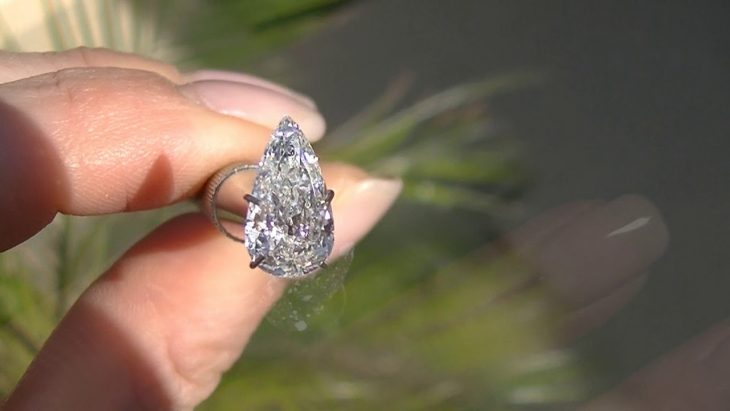
Reputable Jewelers Will Disclose
Did you know that In the Revised Guidelines for the Jewelry Industry, collected back in January 2001, at that time the FTC strongly specified that it is illegal for a diamond seller not to disclose that a diamond has been clarity enhanced by a fracture-filling procedure.
It’s in everyone’s interest for the disclosure process to be clearly acknowledged. Retailers of good repute want their consumers to know they are getting this kind of stone that offers beauty, size and affordability. And consumers want to buy with their eyes wide open—knowing all the options they have and then making an informed decision. Even after learning about all the treatments applied to diamonds today, you can’t expect to become a diamond expert overnight. But by learning all you can, you will develop a better understanding of what you’re looking at when you go shopping for diamonds online or in a retail setting. You’ll also begin to know which questions you should be asking prior to making your important diamond purchase. In the end, a diamond grading report like those coming from an independent laboratory like GIA, EGL AGS will become your best protection.Bottom of FormTop of FormBottom of Form
Does GIA Issue Diamond Reports for Laser Drilled Diamonds but not for Filled Diamonds?
The main reason that GIA is able to deliver a grading certificate for diamonds that have been laser drilled, is because this procedure is deemed permanent. After a stone has been laser drilled, it will remain in that condition forever. Therefore, a grading report can be issued much like it can for other diamonds in a permanent condition that will not change. Conversely it is an interesting fact to note that fracture filled diamonds (including some of those which have been previously laser drilled) are not issued a diamond certificate. This is because it is possible under some circumstances that a diamond may lose its filling later on after it has been examined and given a certain grading. While that does not happen in most cases, it is still potentially possible. So. GIA could not grade those with certainty that the situation with that diamond will remain the same for the entire life of that stone—which can be centuries.
If a diamond has been laser drilled, is it always detected?
Some laser drilling of diamonds can be quite obvious to see under a loupe or microscope because so much drilling has occurred on that particular stone. On the other hand, different diamonds that needed very little treatment can be nearly impossible to detect, even under the professional eye of a jeweler. It almost always depends on just how deep the laboratory drilled into the stone and also the specific location of where the drilling took place. When diamonds are mounted, whether they are laser drilled or completely natural and untreated, it’s almost virtually impossible to decipher by looking at the mounted diamond if some form of drilling was done.
Viewed face up, a laser drill hole is so minute that it looks like a pin point inclusion which is a naturally occurring blemish, and not altogether a bad thing. If you can tilt your diamond on a slant it is possible to make out, not only the laser drill hole but also get a view of the canal (or tunnel) the laser created from the surface of the diamond to its dark internal inclusion.
Since GIA grades laser drilled diamonds, are they better than fracture filled diamonds?
The simple answer is not necessarily. Would they be considered more valuable? Not really either.
The circumstance that GIA issues lab reports on drilled diamonds is positive, however the clarity you may be purchasing now that the stone’s been laser drilled may in fact have been just as good a slightly lower clarity grade prior to its treatment. And if the original stone were good in the other characteristics of the 4Cs, then you are getting a good diamond that has undergone a smart beauty treatment. Who doesn’t want the largest, most brilliant diamond possible, and at an affordable price that keeps their budget in check? Treated diamonds of any kind deliver these options to the modern shopper. Each diamond to consider must be able to stand or fall on its own merits.
The Bottom line about laser drilled diamonds
If all other aspects of the stone are desirable; color, cut, and carat weight, and deemed excellent plus it is an eye clean clarity grade, don’t let the fact that your diamond has been laser drilled discourage your final decision. Naturally, you should expect a better price than if you were buying a diamond with no treatment. That’s understood. But all things being equal, lasered diamonds are sold every day around the globe to shoppers looking for the most attractive diamond they can possible acquire at a budget worthy price.

Should I choose a Clarity Enhanced Diamond?
First things first. Education is the number one key to deciding if a clarity enhanced diamond is right or wrong for you. Read carefully through the discussion above and you’ll discover all you need to know to make an informed verdict. You’ll have learnt all the pros and cons of clarity enhanced diamonds, so no one will have to tell you what to choose. You’ll be making the right decision and be very happy about it too. Natural, untreated diamonds have great appeal to most people. Their extremely high price? Not so much. Most shoppers today must weigh price and value when shopping for a diamond engagement ring or actually any other diamond for an important piece of jewelry.
Conclusion: Laser Drilled or Fracture Filled
You’ll never be sorry you studied all the facts first before you made your decision. Laser drilled diamonds can improve the beauty of otherwise quality stones. Fracture filling of diamonds which make inclusions seemingly ‘melt’ away are also an attractive option when it comes to selecting the diamond of your dreams. With these options in view, laser drilled, or fracture filled, you’ll be glad you have more choices today than ever before. You’ll be satisfied when you do make that important purchase and enjoy it for years to come.
